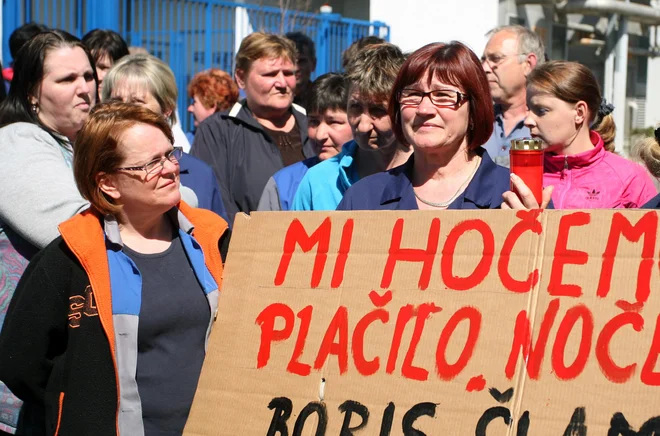Slovenia with the highest growth in the number of bankruptcies in the region

While macroeconomic indicators for 2024 show signs of recovery, the number of companies that have been in insolvency proceedings have increased significantly in Slovenia. According to the latest study data CEE INSOLVENCY STUDY 2025, Published by the Coface International Insurance Company, Slovenia had as much as 32.4 % growth in bankruptcy, which is the highest growth among all Central and Eastern European countries.
After two crisis years, marked by high energy costs, inflation and geopolitical uncertainty, the economic image in the region has improved. In 2024, the average GDP growth reached 2.6 percent – in 2023, for example, only 0.8 percent – and inflation decreased by almost half – from 11.2 to 4.6 percent. But as a regional economist for Central and Eastern Europe at Coface points out Mateusz Dadejmany companies, especially in manufacturing and transport, have previously exhausted their reserves. « The increase in business insolvency reflects deeper structural problems and the delayed impact of past crises, » says Dadej.
Maribor Foundry symbol of a broader crisis
Slovenia has the biggest relative increase in bankruptcy, according to Coface, which mentions the collapse of the Maribor Foundry, one of the oldest industrial companies in the country where they finally stopped production at the end of the year. The company is just one of 769 Slovenian companies, which were bankrupt last year or were just before it. The largest number of procedures, 29.3 percent, were initiated in construction and in the segment of business and personal services – 22.6 percent, while the financial sector had a negligible share – a bad percentage.
Workers’ strike at the Foundry in Maribor April 2013. Photo: Tadej Regent
The reasons for the growth in the number of insolvency are to be found in a combination of tight financing conditions, higher interest rates and reduced access to credit. In addition, changes in tax and social policy – including the abolition of supplementary health insurance and the introduction of a compulsory contribution – reduced the available household income, which has a negative impact on domestic demand.
Statistics with warning
Although the total number of insolvency procedures in the region seemed nine percent – from 50,248 in 2023 to 45,938 in 2024, analysts point to methodological traps. For the fall, it is largely « guilty » by Hungary, where the proceedings of the company’s erasure were suspended due to the pandemic.
In 2023, the government launched legal reforms and unification of records, so that, according to Coface, the number of cases in question decreased by more than a quarter due to « administrative ‘normalization or statistical cleaning of accumulated cases from previous years that no longer corresponded to new formal criteria for recording. »
Excluding Hungarian, the number of bankruptcies in the region is actually increasing by three percent – from 29,771 to 30,680 cases.

COFACE photo: Abdul Sabor/Reuters
In parallel with the growth of bankruptcies in Slovenia, similar trends – increasing costs and fiscal imbalances – also appeared in Romania, Latvia, Estonia and Croatia, while Polish companies have started to use more restructuring processes as a tool for solving liquidity problems, causing the proportion of cases to increase by almost one fifth.
According to the insurance company, the Czech Republic and Slovakia retained relatively stable trends, and the share remained almost unchanged. In addition to Hungary, there were fewer cases, in addition to Hungary, Serbia and Bulgaria with a 12.1- and 5.7 % fall.
Europe bets on investments – but the risks remain
Coface announces that the release of European cohesion funds could be provided by a wave of infrastructure and industrial investments in the coming months, which could have a positive impact on construction and related areas. However, the risks remain.
Long -term stability will depend on strategic investments and more predictable economic policy.
Jarek Jaworski, Regional Director of Coface
« Long -term stability will depend on strategic investments and more predictable economic policies, » he says Trench jawski, COFACEA Regional Director.
Bachened credit conditions, US and EU geopolitical tensions, and the possibility of raising customs duties can quickly undermine investors and consumers. If the US preserves or even raises customs duties, the EU could « activate the instrument for the first time to discourage forced measures, which would affect the transatlantic trade in services, » the insurance company said.
Next year will be a test for the durability of the Slovenian and regional economy. Although economic forecasts are no longer pessimistic, the question remains whether companies that have survived the turbulent period will be able to capture a wave of recovery – or be captured by the late effects of old crises.







